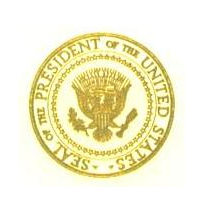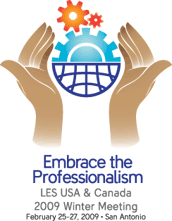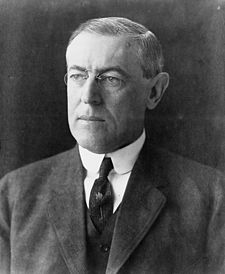Professors are a dedicated lot who are, if nothing else, passionate about their work. This is especially true of research professors who come up with the seeds of a new technology. Universities welcome and encourage research that can be commercialized and actively engage in technology transfer to put new inventions in the hands of companies that can fully exploit the technology. The universities — and the professors themselves — receive money by way of royalty payments. It’s pretty routine and occurs every day.
Last year, the University of Missouri spent $1.4 million commercializing intellectual property while bringing in $6.2 million in licensing income. Now, the university has filed a lawsuit in district court against chemical engineering professor Galen Suppes to regain rights to his research relating to renewable energy.
Suppes, along with Dr. Rusty Sutterlin, co-founder and CEO, formed Renewable Alternatives, LLC to develop technology related to products that are an alternative to petroleum-based feedstock materials. Research activities focus on the synthesis of phase change materials, high-performance diesel fuel additives from vegetable oils and fats, development of advanced/integrated reactor systems, new uses for glycerin and glycerin conversion products and regenerative fuel cell technology.
According to the Associated Press, Suppes and Sutterlin formed Renewable Alternatives to commercialize their work on fuel cells and other fuel-related technologies because they thought the university had a poor track record in pursuing patents on professors’ research. Suppes said university officials had shown no interest in his efforts until he “informed them that royalties had been paid.”
“The Missouri tech transfer program is totally broken and basically beyond repair.” ~ Professor Suppes
The actions that led up to this case are quite convoluted but basically, Suppes, as a professor and university employee, is required under the university rules to assign to the the University of Missouri “all domestic and foreign rights to any invention made by the employee within the general scope of her/his duties as employee of the University, unless such requirement is waived in writing by the University.”
The complaint now alleges that since 2001, Suppes has invented several inventions within the scope of his duties at the University. But, “rather than disclose and assign those inventions as required, Suppes has on approximately 31 occasions submitted invention disclosure forms that were altered, usually by deleting or substantially modifying the specific assignment language contained in the forms such that Suppes did not in fact assign any meaningful rights to the University. On these occasions Suppes submitted the forms without bringing his alterations to anyone’s attention.”
In addition, Suppes has on other occasions denied that certain inventions were within the scope of his duties and services, asserting that they were conceived and reduced to practice without use of University facilities or resources or while Suppes was not working for the University, and Suppes and Sutterlin have since filed multiple patent applications, without acknowledging the University’s ownership. Suppes has since refused to execute assignment documents. The university is now suing in order to get rights more to than 30 inventions and 11 potential patents it says were developed in his Columbia campus labs.
See the entire complaint here.
- US published application 20050008904, Regenerative fuel cell technology.
- US Patent No. 6,574,971, Fatty-acid thermal storage devices, cycle, and chemicals.
From the Missouri Innovation Center Newsletter:
Q: What roadblocks have you encountered in starting your company here at the University of Missouri, and what improvements have been made?
Dr. Galen Suppes (GS): I initially met some resistance within the University when I sought permission to pursue my own company. However, that worked out. I found that clear advice regarding University procedures was somewhat lacking. For instance, I was not aware of the importance of the “Potential Conflict of Interest” form. I would strongly recommend that anyone starting their own business here at the University look into this form right away. Renting space for my company here on campus has been somewhat difficult, but the College of Engineering and MIC helped me in breaking ground. A thorough understanding of how the Office of Technology and Special Projects works would also be of great benefit in getting approved in a timely manner. At this point, it is becoming more clear that the University is supportive of faculty entrepreneurship and see that the commercialization of technology will create jobs for the community and the state. SBIR and STTR grants are now seen as quality funding mechanisms, and the University tends to be supportive of faculty spin-off companies, especially if this allows SBIR and STTR funds to be acquired.
Earlier, a District Court ordered Nobel Prize winner and former Yale University professor John Fenn, 87, to pay Yale $545,000 in royalties and penalties, and pay their legal bills of almost $500,000 for what the court called “fraud” and “civil theft” when he licensed the rights to U.S. Patent No. 5,130,538 to a company he partly owned. More on the Fenn case here.
In one of the few cases where the inventor went to jail, Petr Taborsky, a former student at the University of South Florida, went to jail as a result of a dispute over technology ownership. In that case, Taborsky was convicted of grand theft and theft of trade secrets and sentenced to probation. Read about the tale of Taborsky here.
More at IPBiz.



 Today is National Inventors’ Day in the United States. It is celebrated on the birthday of Thomas Alva Edison and for good reason. Edison had 1,093 U.S. Patents issued in his name covering not just the incandescent light bulb but the phonograph, the motion picture camera, and an early printing telegraph, among other things.
Today is National Inventors’ Day in the United States. It is celebrated on the birthday of Thomas Alva Edison and for good reason. Edison had 1,093 U.S. Patents issued in his name covering not just the incandescent light bulb but the phonograph, the motion picture camera, and an early printing telegraph, among other things. The
The  As
As